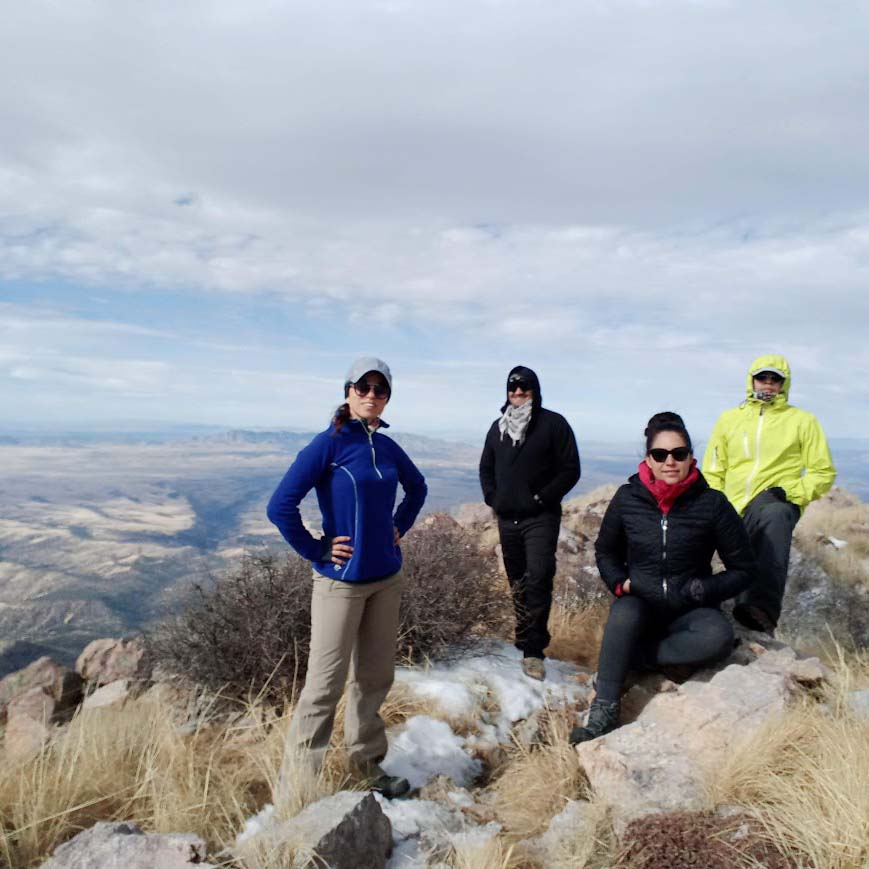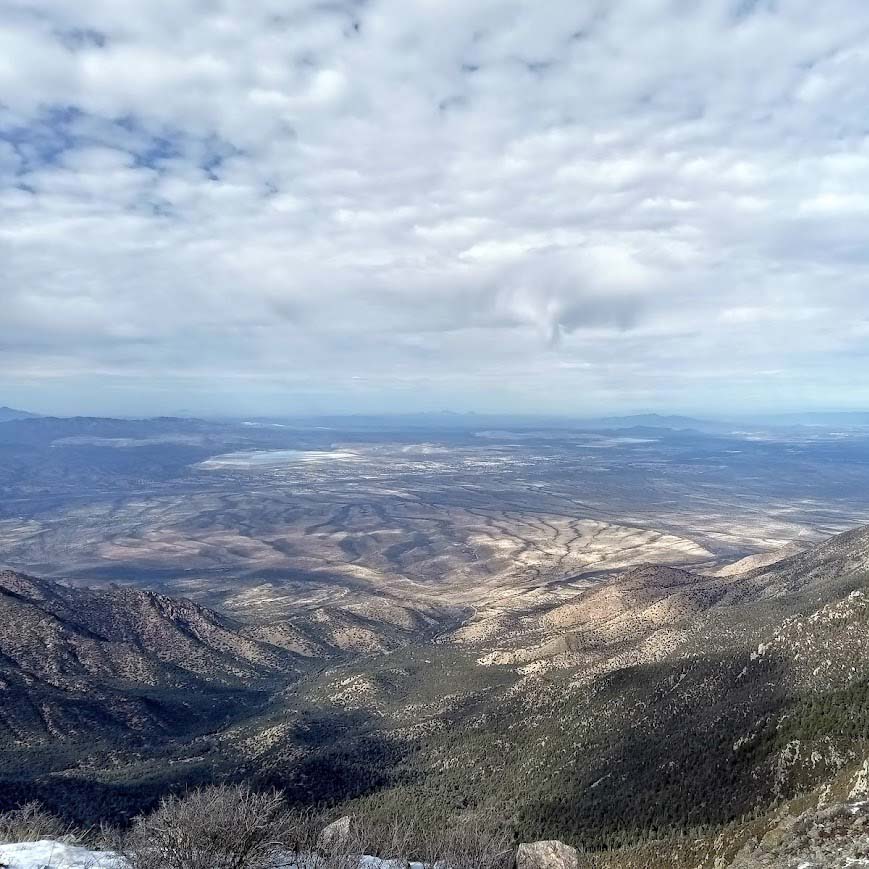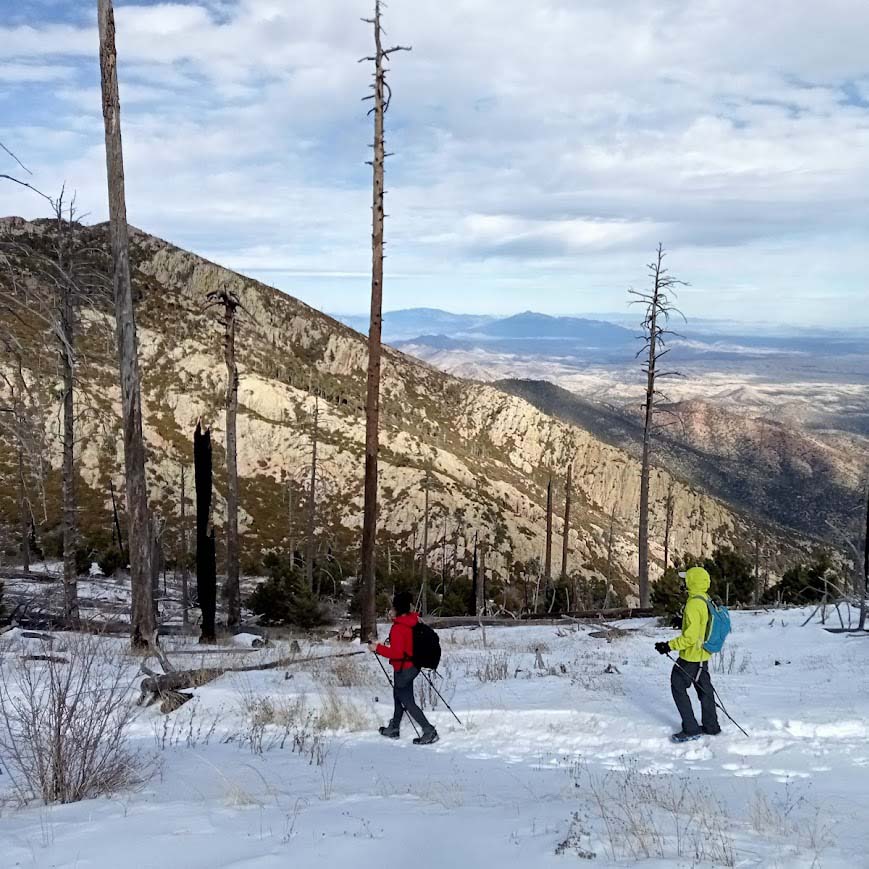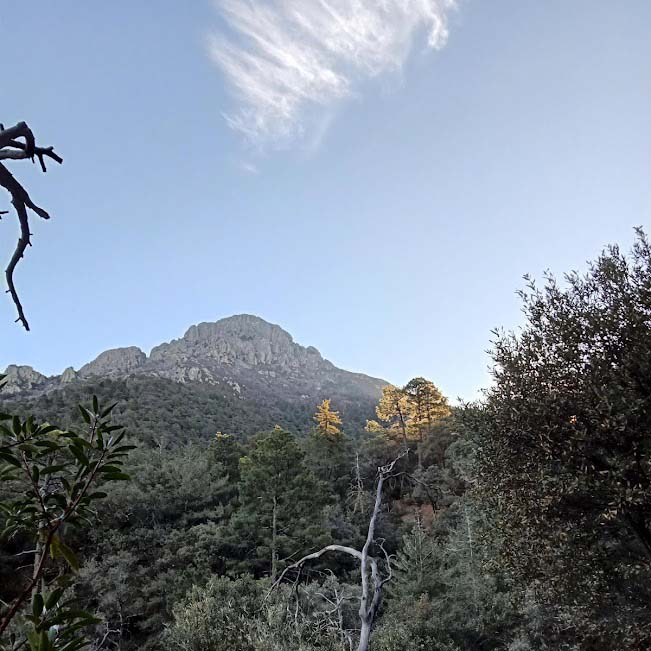
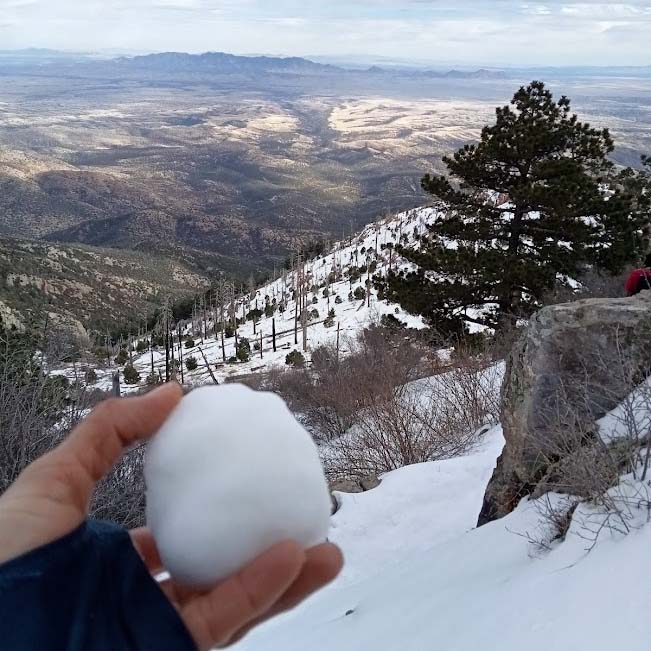
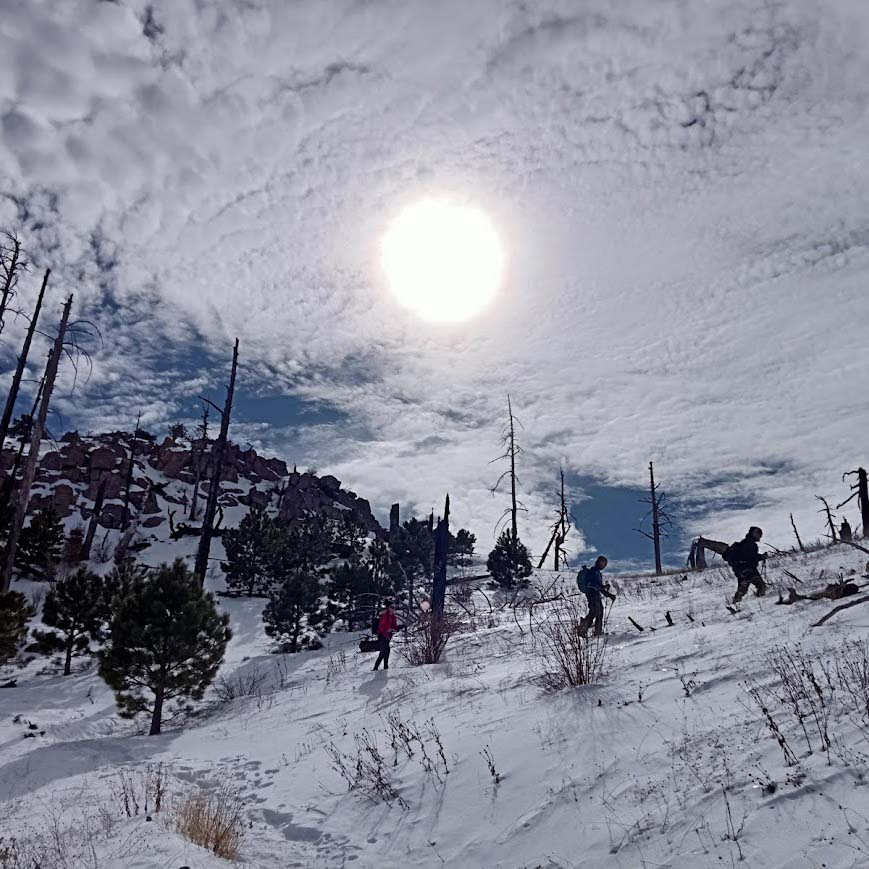
Guest Blog by Sofía Vargas
The following is part of a series of recommended Sky Island hikes. Be safe, have fun, and leave no trace.
Hiking is one of the best ways I’ve found to connect with nature, cultivate an environmentally friendly philosophy, and expand my knowledge of places with impressive landscapes and enriching experiences.
In this way, I’ve surrounded myself with friends who seek the same experiences and share my admiration for nature. Last year, to celebrate the birthday of Kenia, one of my friends in Hermosillo where I live, a group of us traveled from Sonora and made the now-traditional ascent of Mount Wrightson in Arizona’s Santa Rita Mountains.
Located within the Coronado National Forest about 40 miles southeast of Tucson, the Santa Rita Mountains are home to incredible biodiversity, with a variety of plants and animals that are endemic to its desert and mountain habitats. This confluence of habitats is what makes the Sky Islands so fascinating. You can see dramatic changes in vegetation, soil, and elevation all in the same space.
Madera Canyon, nestled in these mountains, has been considered the third-best bird-watching destination in the United States, as it’s a refuge for various migratory birds.
We made the ascent in January, right after some days of snowfall that covered much of the path. One of the trails leading to the summit of Mount Wrightson is the Old Baldy Trail. This is the one we took.
This 10.4-mile round trip journey runs along the north face of the mountain, which means it’s mostly shaded. And for this reason, the snow hangs around much longer and can often be seen as you hike, with the steep face of the mountain in front of you.
The ascent is quite steep as Mount Wrightson’s elevation is 9,456 feet. You’re always walking in a zigzag pattern, and it becomes much steeper just before reaching the summit.
Undoubtedly, when going in the season after winter storms, parts of the route will be covered in snow. You’re likely to see icicles hanging from rocks in the last few miles. Upon reaching the summit, you can take a few minutes to rest while contemplating a beautiful panorama all around you with a clear and beautiful blue sky.
The plants you’ll discover range from cacti and agaves to oaks and pines. The vegetation is so varied and adapted to arid and mountainous conditions.
Among the residents of the Santa Rita Mountains are the jaguar, mountain lion, white-tailed deer, and a variety of birds, including the elegant trogon and the Mexican spotted owl.
Some considerations to keep in mind are that this route is considered difficult due to the distance (10.4 miles) and the elevation gain it involves (about 4,000 feet). Also, if done during summer, it’s important to bring plenty of water and electrolytes to avoid dehydration.
With moderate to good physical condition, it can be done in five to 10 hours of walking. It’s good to plan your visit, of course, wear appropriate hiking clothing and footwear, bring enough water, some light food and a first-aid kit, as well as a hat and sunscreen. The weather on the mountain is changeable, so checking the forecast before leaving is very important as strong winds, rain, or snow are possible.
As a safety measure, although the route is well marked, it’s always smart to bring a map or a GPS app. (Here’s a map on AllTrails where you can download the route to your cell phone in advance. And here are Google directions to the trailhead.)
And as a final piece of advice, it’s very important not to leave waste and to respect the trail and everything that lives there so these mountains continue to be a refuge for biodiversity and a place of wonder for future generations.
On our last visit, my friends and I were chatting, and we were reflecting on how each experience in natural areas like the Santa Rita Mountains is different. You find new elements that challenge you or awaken your senses. New ideas, joys, difficult moments arise. And everything, together, inspires us to question how we relate to everything around us. Nature is a great teacher.
So pack your backpack, put on your hiking boots, and discover the diversity, beauty, and fun that the Santa Rita Mountains hold.
Sofía Vargas is a clinical psychologist in Hermosillo. As an outdoor enthusiast and promoter of environmental care, she studied a master’s degree in environmental psychology, has developed conservation proposals and projects as a member and cofounder of Caminantes del Desierto, and in her free time supports urban conservation activities with this group.



